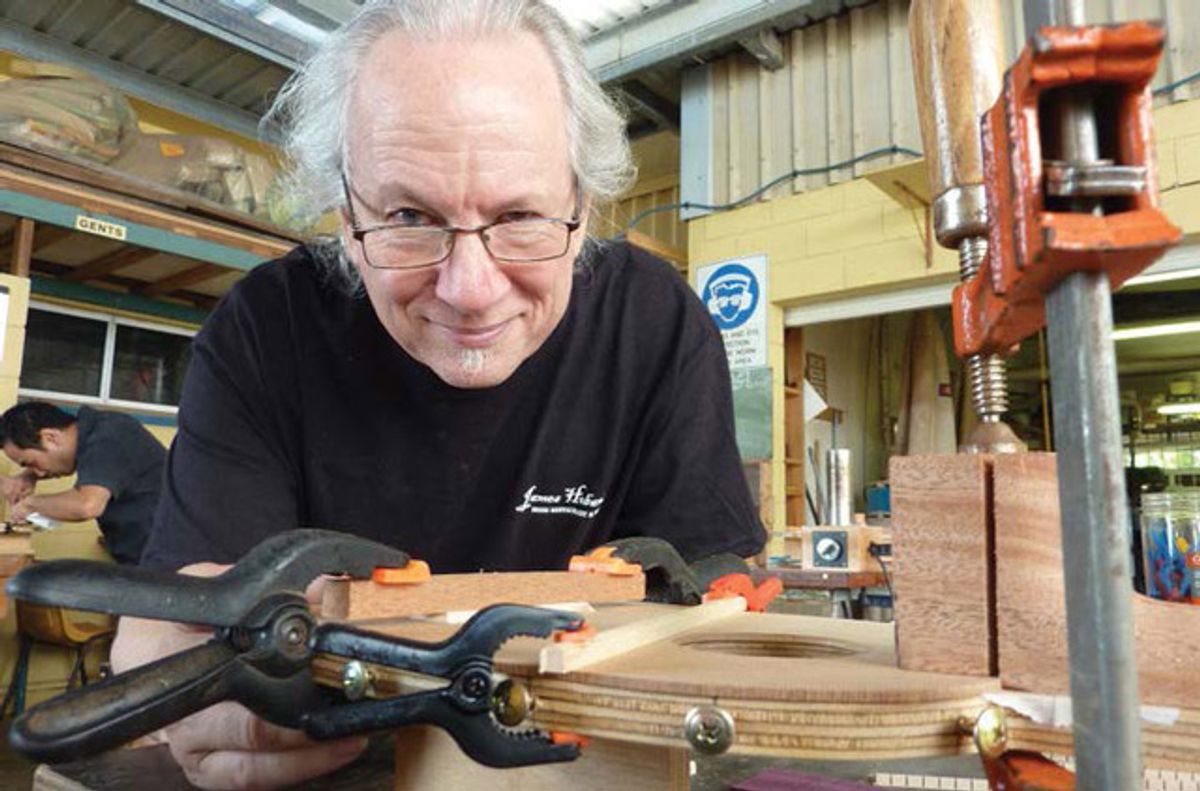
We welcome Rick Turner to our Acoustic Soundboard column in his 50th year as a luther—what would you like to know about building acoustics?
I’m really pleased to be joining some old friends as a writer here at Premier Guitar in this, my 50th (gulp!) year as a professional luthier.
It was 1961 and I was still in high school when I first started working on my own instruments: a Fairbanks & Cole 5-string banjo and a Harmony-built Stella 12-string guitar. The following year, I wound up at Boston University at one of the very best times for a young folkie to be seduced away from college and into the coffeehouse folk-music scene. One thing led to another and in 1963, I wound up as an apprentice at the Stringed Instrument Workshop on Tremont Street in Boston, initially handweaving leather guitar straps. Before too long, I’d loaded them up with more straps than they could sell, which actually turned out to be my lucky day.
The owners of the Stringed Instrument Workshop repaired guitars for the leading folk-music store in Cambridge, which had just had an entire rack of Paracho-built, nylon-string guitars fall over. There was every kind of damage imaginable—broken pegheads, cracked sides, holes in tops and backs, bridges half or completely off, and more. These were guitars that cost about $8 apiece in Mexico and sold for $50 at the store, so writing them off was no big deal. But if anything could be salvaged, that was all to the good. That pile of guitars was my introduction to hot-hide glue, repairing and hiding dings with stick shellac, French-polish touchup work, cleating cracks, and doing fretwork. It kept me busy for weeks.
There were very few independent guitar makers in the U.S. circa 1963. I did get to visit John D’Angelico’s shop in New York and knew a flattop builder named Clyde Tyndale in Woods Hole, Massachusetts, who’d figured out that he could “break in” new guitars by putting them in a closet with stereo speakers. And there was Peter Colby, an incredible craftsman in Boston who made the interesting combination of Kentucky long rifles, banjos, and autoharps. >
One of the reasons for the paucity of luthiers making archtop or flattop steel-string guitars, banjos, autoharps, etc., is that these were instruments with a history totally tied to factory production. Companies like Washburn, C. F. Martin, Harmony, Oscar Schmidt, Vega, Gibson, and S.S. Stewart are where these instruments typically came from. The S. S. Stewart banjo company put out more than 25,000 banjos in the last quarter of the 19th century. Harmony was making thousands of stringed instruments a day at one point! Even more obscure brands like Bay State, Howe-Orme, Paramount, and Weymann were cranking out instruments in quantities that seem almost unbelievable now.
Things were a bit different in the world of classical guitar, where the tradition is deeply embedded in small shops. In the early 1960s, a few classical shops and traditionally trained builders such as Eugene Clarke and David Jose Rubio were making world-class guitars in the U.S. And Michael Gurian was transitioning from classicals into what would be one of the earliest of the “new wave” of boutique, steel-string guitars.
When I started, there were only two small books on guitar making. Both were published in England, both concentrated on classical guitars, and both barely gave a nod to the possibility that one would want to make a steel-string guitar. There was absolutely nothing on guitar repair, so we hacked away, reverse engineered, and invented to figure it all out. We shared our successes, disasters, and techniques while we discovered other folks who shared our passion for all things guitar.
At the time, the understanding of repairs and maintenance—even jobs as common and mundane as fret levels—was crude at best. The techniques I first learned for neck resetting bore more resemblance to circa 1490s Spanish Inquisition torture than to the museum-conservation-quality work that is expected today. We now have dozens and dozens of highly specialized tools for repairing and adjusting acoustic and electric guitars, and easy access to thousands of aftermarket guitar parts from companies like Allparts, Stewart-MacDonald, and WD, whose wares are available online with the tap of a finger. Repair luthiers like Dan Erlewine of Stew-Mac and Frank Ford (frets.com) are constantly coming up with new and improved ways to restore, repair, and adjust guitars to keep them in service.
In future columns, I’ll try to bridge the worlds of guitarist and luthier to make the language of the builder and repair tech more familiar to you. This will hopefully help you understand what you can do (and what should probably be done by a luthier) to get your guitar or other fretted instrument into the best possible playing condition. I’ll also delve into some of the theory that goes into guitar design, what traditional and contemporary materials science has to do with structure and vibration, how instruments age for better and/or worse, and more. Also, I’d love to hear from readers out there. What do you want to know that I might possibly be able to explain?
Off to extract another guitar from the sawdust!
Rick Turner is a longtime luthier who worked for Alembic and Gibson (among others) before founding Renaissance Guitars, Rick Turner Guitars, and Compass Rose Guitars. An inventive designer, he helped pioneer the boutique guitar with the Model 1 that he built for Lindsay Buckingham in the '70s. His spent a decade on the road with the Grateful Dead, and rumor has it that he can build a mandolin in four days.
